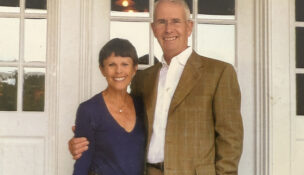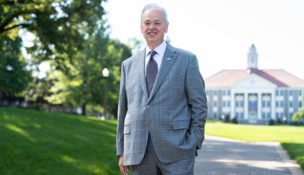The buddy system
Grant-making program, Virginia Biosciences Health Research Corp. (also known as the Virginia Catalyst), encourages researchers to work together
Jessica Sabbath //September 29, 2017//
The buddy system
Grant-making program, Virginia Biosciences Health Research Corp. (also known as the Virginia Catalyst), encourages researchers to work together
Jessica Sabbath //September 29, 2017//

Ross Dunlap, CEO of Ceres Nanosciences, says a grant from Virginia Catalyst helped the company attract additional funding. Photo by Stephen Gosling
In 2015, Manassas-based Ceres Nanosciences was trying to commercialize its breakthrough diagnostic test for Lyme disease. The company uses the Nanotrap nanoparticle technology to detect signs of disease at extremely low levels from urine, saliva and blood.
Giving the company a boost at that time was a $500,000 grant from a state-funded nonprofit corporation, Virginia Biosciences Health Research Corp. — also known as the Virginia Catalyst. “Every amount of funding is critical for a company at our stage, especially in this industry,” says Ross Dunlap, CEO of Ceres Nanosciences. “The life-sciences industry — biotechnology — is a very expensive business to set up and run.”
The Catalyst grant provided more than just dollars and cents. The organization’s assistance allowed Ceres to collect more data supporting its technology and fine-tune it for the commercialization of its Lyme-detection test. The Catalyst also helped the company develop relationships with university researchers with valuable expertise.
Ceres’ experience is one of many examples of how Virginia is trying to turn research into marketable products and services that will spur economic development. While funding is a big part of the process, the grants demand collaboration among industry and the state’s research universities.
Catalyst funding requires a grant recipient to develop partnerships with two of Virginia’s research universities. For its project, Ceres worked with George Mason University and Virginia Tech. George Mason’s research focused on helping Ceres commercialize the Nanotrap Lyme test, while Tech’s Lyme disease research provided the company with patient samples and comparison data for clinical tests.
The grant also spurred more interest in the company. “[The Catalyst grant] did actually help us attract more funding, not just from the perspective that we had more data in hand, but it also gave us credibility, and it demonstrated we already had outside investment,” says Dunlap.
Fast forward to today and Ceres is in a major growth period. The company conducts its Nanotrap Lyme Antigen Test for patients and physicians around the country, and in August it announced plans to expand testing to Europe. Ceres also is seeking Food and Drug Administration approval to provide testing at the “point of care,” such as a doctor’s office.
Ceres, which now has 13 employees, is hiring more scientists. It has received grants from major benefactors, such as the Bill and Melinda Gates Foundation, to apply its technology to other diseases, such as Zika, HIV, malaria, tuberculosis and Ebola.
In addition, the company is going through a $9 million round of private investment, with more than $5.5 million already pledged by GreyBird Ventures, an early-stage venture fund based in Boston.
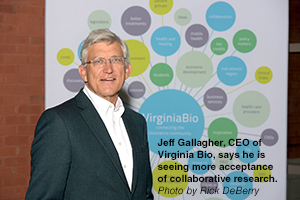
Stronger together
The competition for research dollars is fierce. For many major grants, Virginia’s universities aren’t as competitive on their own. But when their resources are combined with other universities, they can offer the breadth of research needed to attract major investment. And that means that collaboration has become increasingly important to turning Virginia’s university research into marketable products.
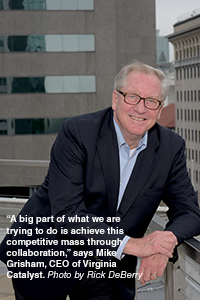
Started four years ago, the Catalyst has held seven rounds of funding. Its latest recipients will be announced in early October.
Member universities include George Mason University, Virginia Commonwealth University, University of Virginia, Virginia Tech, Old Dominion University, the College of William & Mary and Eastern Virginia Medical School.
To qualify for grants of $200,000 to $800,000, projects must truly be collaborative. They are required to include partnerships with two of the seven participating Virginia research institutions and at least one industry partner. In addition, each project must have matching funds. “All we’re able to do is put enough money up to really catalyze things where they can hit meaningful milestones to attract additional outside capital from either the [National Institutes of Health], or the Department of Defense, or venture capitalists or from Big Pharma,” says Grisham.
Data show the relatively young program is having an impact. In four years, the Catalyst has spent $10.4 million on 24 projects, which had just over $20 million in matching funds. Those projects have gone on to raise $80 million in outside funding. “That’s really a 10-to-1 return on taxpayer dollars,” says Grisham. “For every dollar we’ve put in, we’ve attracted 10 times that to really drive commercialization and get our innovations from our universities into the marketplace and thereby creating jobs.”
Historically, about 30 percent of the projects that have applied for the grants have been funded. But demand is getting stronger, and competition is more intense. In the sixth round of funding, 30 projects submitted plans, and six were selected. In the seventh round, which focused on neurosciences, three of 12 projects were selected to receive funding.
The money for these projects isn’t guaranteed. To receive the full funding, research partners must hit major milestones, which are included in their contracts.
Money for Catalyst grants includes funds from the General Assembly as well as $50,000 a year from each of the participating universities. In the current fiscal year, the program will receive $3.5 million from the state.
All projects are reviewed and vetted by the Catalyst’s Project Management and Oversight Panel, which includes scientists, venture capitalists and CEOs from life sciences companies.
The panel members evaluate projects on the capability of their management teams, the probability of their obtaining follow-on funding, the quality of their science and the likelihood of their research being commercialized. The panel then makes recommendations to the Catalyst’s board of directors, which selects the projects.
In addition to fueling growth for early-stage companies, the program has improved relationships among Virginia’s researchers. “Somebody accused me early on of being the eHarmony of life sciences in Virginia,” says Grisham.
“We’ve really changed the culture from one of being fiercely independent to highly collaborative — focused on taking our innovations out of universities and getting them commercialized.”
A breakthrough facilitated by the Catalyst was an agreement among the research institutions to share core facilities. All seven agreed this summer to share specialized equipment and laboratories, charging the same rate that their own researchers would pay. “Rather than each university having to replicate each of these major investments in research tools, we’re able to allow people to share them,” says Grisham. “It’s a big breakthrough in collaboration.”
Becoming ‘The Brain State’
Another big project launched by the Catalyst includes the Virginia Neuroscience Initiative. It includes a statewide Neurological Disorders Registry of patients in Virginia who have been diagnosed with disorders such as Alzheimer’s, Parkinson’s, ALS, traumatic brain injury and mental illness.
This registry can provide researchers in those fields with an important tool, says Grisham. “Let’s say you’re a researcher and you need to know how many women in the commonwealth have Parkinson’s disease between the ages of 20 and 45 who don’t have diabetes or cardiovascular disease. Well, we can give you that answer in 48 hours.”
The initiative’s Clinical Trials Network includes five of Virginia’s largest medical centers and university researchers that work together to screen and enroll participants for clinical trials.
The initiative also includes a directory of Virginia’s researchers, health-care providers and facilities involved in neurosciences. That information combined with promising research at several universities, such as The Roanoke Brain Study at the Virginia Tech Carilion Research Institute, could help Virginia attract a lot of research money.
“NIH has a huge brain initiative, where they’ve said over the next 10 years we’re going to put $1 billion into brain research,” says Grisham. “Well, what Virginia aspires to be, we’re not there yet, but we aspire to be is ‘The Brain State.’”
A new fund
Another new fund set up by the commonwealth has goals similar to the Catalyst. The General Assembly last year established the Virginia Research Investment Fund (VRIF) to encourage collaboration in commercializing research in biosciences, cybersecurity and data analytics. The fund also will be used eventually to help universities attract high-caliber researchers.
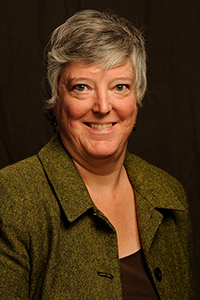
To be eligible for funding, a university must partner with another Virginia university, a private company or multidisciplinary groups within a university. Like the Catalyst process, a panel of scientists, venture capitalists and small business owners will review and score the projects. Matching grants also are required.
The General Assembly allocated $12 million from its general fund for the VRIF. The legislature also included $29 million from a bond referendum to fund requests for equipment or renovation of facilities.
This summer, the Virginia Research Investment Committee, which governs distributions of VRIF, accepted proposals for its first round of funding. The committee determined the initial round would emphasize biosciences — particularly neurosciences — and cybersecurity.
The committee dedicated about $4 million for the first round. It received 10 proposals and likely will vote on winning projects in November.
A shifting culture
Gov. Terry McAuliffe has been a major proponent of efforts to develop the biosciences in Virginia. He has been willing to jump into major projects that can attract research dollars. In 2016, he was named the “Governor of the Year” by the Biotechnology Innovation Organization, a trade association representing biotech companies, academic institutions and related groups in the U.S. and more than 30 other nations.
In addition to a focus on fueling early-stage companies, the state has provided funding to help develop major collaborative research programs, such as the Inova Center for Personalized Health in Fairfax County and the Virginia Tech Carilion Research Institute in Roanoke.
On a whole, some of the larger efforts to raise Virginia’s life sciences profile, like ICPH, are in their early stages, says Gallagher of Virginia Bio. “The results are just beginning to bubble up to the surface,” he says. “[The Catalyst] has attracted a lot of attention from outside the state, even though they haven’t really shown all their fruits yet. But the governor has really raised the profile of the industry in the last four years, highlighting these forward-looking initiatives to accelerate collaborative research. It makes a lot of sense and he has a good story to tell.”
-


